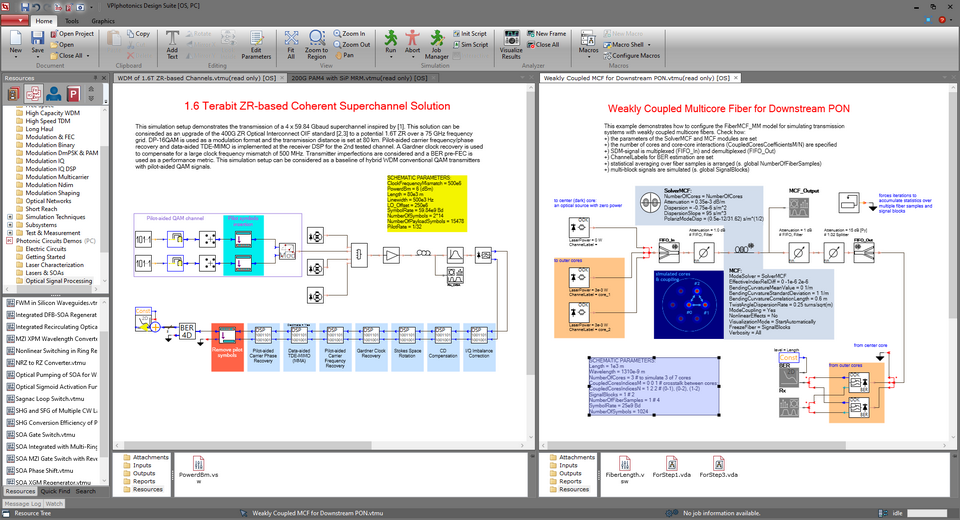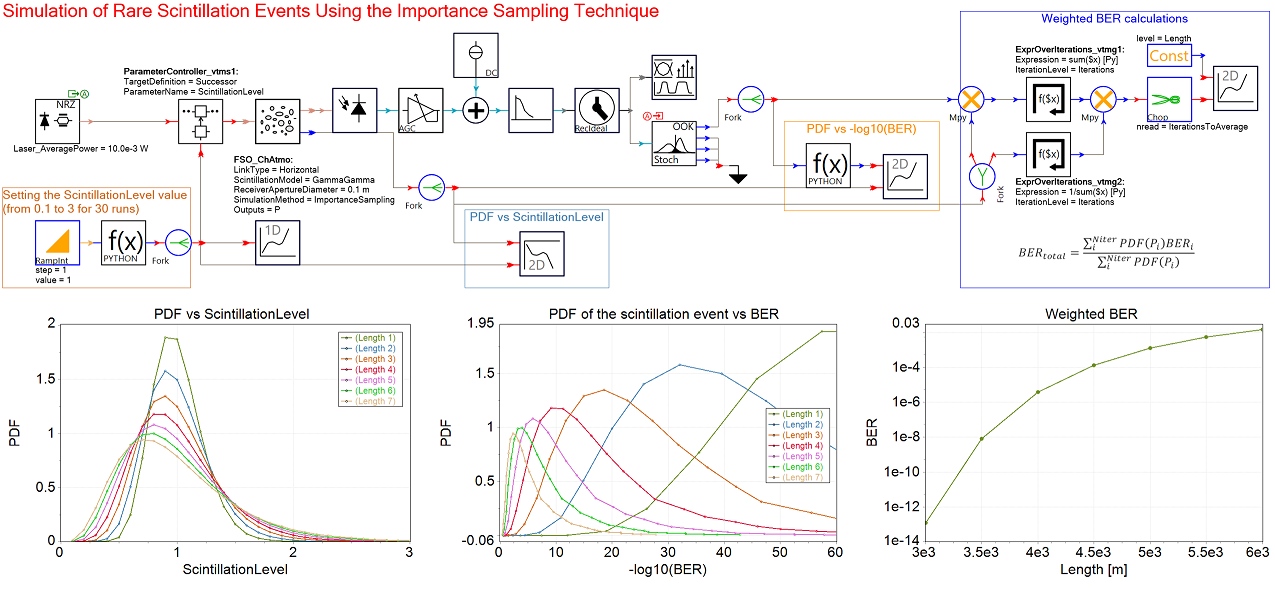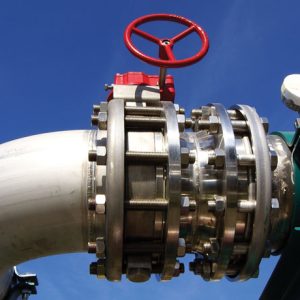VPIphotonics Design Suite 11.5 cracked release
$ 170.00
VPIphotonics Design Suite Version 11.5 offers a comprehensive range of specialized simulation tools and supplementary toolkits tailored for photonic components and optical transmission systems. This version enhances usability, streamlines the design process, and expands analytical capabilities, making it a valuable resource for professionals in the field. The latest iteration significantly improves the simulation and design workflow across various applications, such as direct detection and coherent transmission systems, satellite communications utilizing free-space optics, spatial division multiplexing, and passive photonic devices. Additionally, it supports the design of semiconductor optical lasers and amplifiers, among other advanced technologies. Our software solutions have been successfully adopted by numerous commercial enterprises and academic institutions, enabling them to undertake and complete a variety of research and design initiatives. With the enhanced features introduced in Version 11.5, our design suite is poised to continue delivering exceptional results in future projects.
Description

Among the new Modeling Capabilities of version 11.5 :
-
- New macro for the automated creation of coherent M-QAM-based WDM or single-channel transmission systems, including format-dependent DSP chain
- Demo of a 1.6Tb ZR-based coherent superchannel transmission over 80 km using four DP-16QAM channels and a pilot-aided DSP chain
- Demo of a multi-parallel optical DAC architecture for 64-QAM coherent systems
- DFE/FFE with a new debiasing option, two output formats to accommodate different use cases, and optional usage of pre-set filter taps uploaded from a file
- Performance estimation in direct-detection systems: range limit of output BER values, output of fitted PDF parameters, and calculation of LLR and GMI for PAM-M signals
- New model of weakly coupled homogeneous and heterogeneous single-mode multicore fibers, including intracore linear and nonlinear propagation effects, as well as intercore crosstalk and skew attributed to fiber bending, twist, and longitudinal parameter variations
- Demo on the intercore crosstalk in weakly coupled heterogeneous and homogeneous MCFs, analyzing the dependence on bend radius and propagation constant mismatch
- Demo of an SDM-based downstream PON using weakly coupled MCF illustrating the parameter configuration of the new MCF model
- Demo of a random distributed feedback fiber laser with a mirrorless open cavity that operates based on Rayleigh scattering and stimulated Raman scattering
-
- Faster FSO atmospheric and inter-satellite channel models with enhanced functionality
- New option for the FSO atmospheric channel model to output the calculated isoplanatic angle and Strehl ratio
- Demo of performance estimation of statistically rare scintillation events in an FSO link using the importance sampling technique
- Demo of the performance improvement in a GEO satellite-to-ground link with pointing and coupling losses using FEC
- New passive linear photonic device model based on an S-matrix from a user-defined data file supporting data point interpolation and custom parameter dependence
- Enhanced macro to create compound components based on S-Matrix files with automated detection of ports and parameter dependencies
- Demo of a silicon photonics MMI coupler based on an S-matrix file that has been pre-created with VPIdeviceDesigner
- Enhanced macro to visualize the structure of multi-sectional semiconductor devices, including view and editing of specific parameters of individual device sections and facets
- Enhanced characterization modules for semiconductor optical amplifiers and lasers, offering improved efficiency and broader parameter control options
- Improved PPLN model with optional automatic calculation of the poling period and extended documentation
- New balanced photodetection model with control of responsivity imbalance and CMRR
- Demo of an MRM-based 50Gb PAM-4 system interfacing photonic circuit simulation with optical link performance simulation
Among the new Design Environment and Signal Analysis features of version 11.5 are
-
- Symbolic physical constants (c, h, k, e, etc.) and instant access to scipy.constants available now within parameter expressions
- New macro to convert various physical quantities and units (wavelength, bandwidth, power, attenuation coefficient, dispersion parameters, Kerr nonlinearity parameters)
- New module for displaying numerical values in the Message Log panel and tracking the progress of iterative processes
- New JupyterLab interface based on Python cosimulation for seamless integration of Jupyter notebooks with VPI Design Suite
- Upgraded read-in capabilities for previously saved signal files into a simulation, including signals with mismatched time window
- Enhanced Parameter Editor with an auto-complete pop-up menu and the possibility to store and retrieve parameters in a csv, or xlsx file
- Enhanced module port context menu on the schematic for easy access to wiring, signal source, data file interfacing, cosimulation, and favorites modules
- New option in the Watch panel to trace the dependency of parameters on other parameters
- New access to galaxy init-script from a galaxy instance parameter expression to provide a set of utility functions together with a module
-
- Access to initialization and simulation scripts via new buttons in the PDE ribbon
- Enhanced node selection in the Object Browser to simplify finding multiple objects in a complex schematic and performing operations via the context menu
- Creating a new project or mark an existing folder as a project directly in Windows File Explorer
- Enhanced Search to look for modules that have a parameter with some specific name
-
- New support of diagrams.net for drawing flowcharts, process and network diagrams, LaTeX-based formulas, and much more directly on the schematic for decoration
- Improved visualization and operations with predecessor modules
- Enhanced Analyzer control option to control highlighting the selected symbol in the constellation diagram
- Enhanced Analyzer control option to exclude specific symbols from both metric calculations and the eye diagram display
- Support for LaTeX formulas in annotations, allowing the use of Greek letters and mathematical equations within VPIphotonicsAnalyzer annotations
Version 11.5 provides access to more than 900 ready-to-run simulation setups. New and improved demo examples illustrate the application of the new features and modules.
Design Examples – Rare Scintillation Events in FSO Links
The example shown here illustrates an efficient way of simulating statistically rare scintillation events in a Free Space Optical link using Importance Sampling supported by the atmospheric channel model.
This method allows for simulating user-defined values of power fluctuations due to scintillation. The total BER is calculated through a sum with weights equal to the probabilities of these scintillation events.
Another design example simulates an FSO GEO Feeder link with FEC, illustrating the link budget analysis and exploring the pre- and post-FEC system performance.
VPIphotonics Design Suite™
VPIphotonics Design Suite™ embeds embeds expert knowledge from our component and transmission design tools in one shared, flexible software environment to support requirements in design, analysis and optimization providing you with the most powerful numerical algorithms tailored for your applications. Below is a list of their jointly used features.
VPIphotonics Design Suite comprises the following simulation tools:
- VPItransmissionMaker™ Optical Systems
- VPIlabExpert™
- VPIcomponentMaker™ Fiber Optics
- VPIcomponentMaker™ Photonic Circuits
Photonic Design Environment (PDE)
- Convenient and customizable modern-style graphical user interface (GUI)
- Seamless integration of all VPIphotonics Design Suite tools
- Arbitrary designs can be defined as interconnected building blocks (modules)
- Rich built-in library of modules and applications demonstrations
- Using text and images for annotations
- Powerful search capabilities for modules and designs
- Module parameters can be specified as values or expressions
- Hierarchical designs for abstraction of system complexity and inter facing simulation domains
- Graphical way to concisely represent repetitive and conditional blocks
- User-defined modules and libraries with optional encryption to protect user’s IP
- Macro language to automate design manipulations
- Automatic multidimensional parameter sweeps, optimization, and yield estimation
- Interactive parameter tuning
- Support for local and remote simulations
- Management of simulation jobs
- Export/import capabilities supporting collaborative work
- Export of designs to a free simulator (VPIplayer™)


Simulation Engine
- Key specialist modules based on advanced algorithms
- General-purpose optical, electrical and signal processing modules
- General mathematical operations with numbers, vectors and matrices
- Simulation tools and controls
- Signal and noise models based on full-wave amplitudes or parameterized representations
- Jones and/or Mueller formalism for polarization effects
- Unidirectional and bidirectional signal flow
- Parallel computing at the level of module algorithms, designs, and parameter sweeps
- Support of single and multiple GPUs to speed-up computations
- Python and TCL-based simulation scripting for advanced simulation control
- Support of user-defined algorithms/designs in Python, Matlab®, C++, COM, and Keysight’s PathWave ADS
- Access to the simulation engine for external systems and third-party tools (API)


Data Visualization & Analysis – VPIphotonicsAnalyzers™
- Application-specific virtual instrumentation
- General post-processing analysis of optical/electrical signals and numerical data
- Spectral/waveform analysis with tunable resolution for signal power and phase characteristics
- Multiple input ports for comparing signals/data from different sources
- Polarization analysis (including Poincare sphere) in the time- and frequency domains
- Overlaying, averaging, and stitching traces from different simulation runs
- 1D and 2D plots of numerical data, including histograms
- Polynomial data fitting or Gaussian fitting for histograms
- 3D visualization with surface-, density- or, contour plots
- Flexible data ordering from multiple simulation runs and parameter sweeps
- Global and local peak (minimum/maximum) search
- Exact data reading using markers and textual displays
- Switching between different axis units (e.g. THz/nm) and scaling (linear/log/erfc)
- Visualization settings can be controlled manually or by simulation parameters
- Editable graphic attributes and ready-use themes for publishing-quality figures
- Annotations with text and images
- Saving visualization settings and/or data for future work















